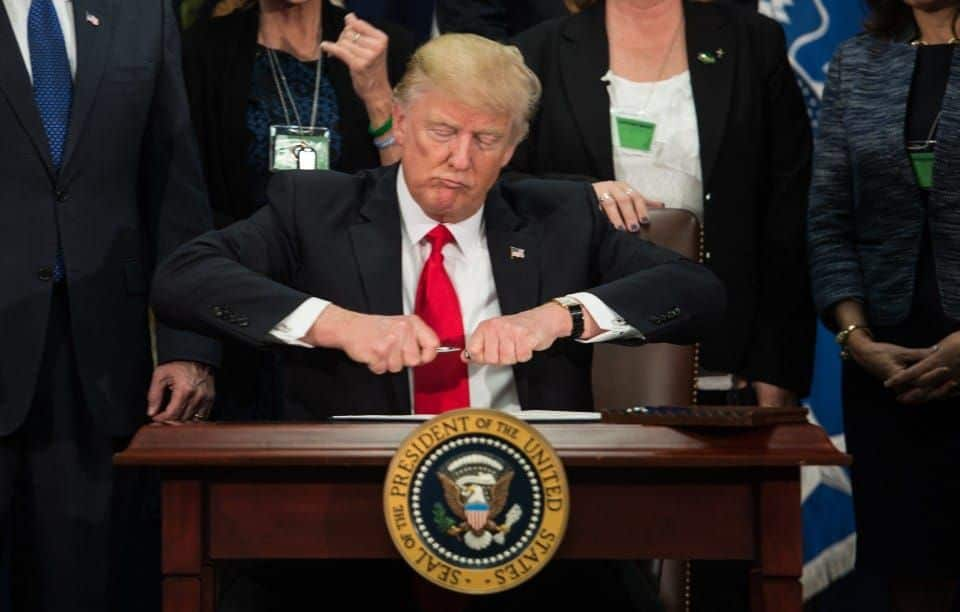In recent weeks, aides to former President Donald Trump have been working diligently on a new universal tariff plan, which aims to redefine the United States’ approach to international trade. The initiative represents a continuation of Trump’s previous trade policies, which were characterized by a focus on protectionism and the imposition of tariffs on foreign goods. However, this new proposal includes a key change that seeks to mitigate some of the potential negative economic repercussions associated with such tariffs.
The proposed universal tariff plan is designed to establish a standardized tariff rate on a wide array of imported goods. This approach aims to simplify the existing trade framework and create a more predictable environment for American manufacturers and consumers. By implementing a universal tariff, the Trump administration’s advisors believe they can bolster domestic industries while also generating additional revenue for the federal government.
One of the most notable aspects of this revised plan is the inclusion of a tiered tariff structure. Under this model, certain essential goods, such as food and medical supplies, would be subject to lower tariff rates. This adjustment is intended to alleviate concerns that higher tariffs could lead to increased prices for everyday consumers, particularly in a time of economic uncertainty. By protecting essential goods from steep tariffs, the proposal aims to strike a balance between supporting American businesses and ensuring that consumers are not unduly burdened.
The rationale behind this change stems from the lessons learned during the previous administration’s trade wars, which saw significant backlash from both consumers and businesses. Many stakeholders, including economists and industry leaders, expressed concerns that blanket tariffs could lead to inflationary pressures and disrupt supply chains. By adopting a more nuanced approach, the Trump aides hope to address these criticisms while still pursuing their broader economic goals.
Furthermore, the revised universal tariff plan is expected to focus on specific countries that have been identified as unfair trade partners. The plan outlines a strategy to impose higher tariffs on goods imported from nations that are perceived to engage in practices such as currency manipulation or intellectual property theft. This targeted approach is intended to protect American industries from unfair competition while still allowing for trade with allies and partners who adhere to fair trade practices.
In addition to the economic implications, the proposed tariff strategy is likely to have geopolitical ramifications. As the United States navigates its relationships with other countries, the implementation of a universal tariff could serve as a tool for negotiating trade agreements. By establishing a clear framework for tariffs, the Trump administration’s advisors believe they can leverage these policies to secure more favorable terms in future trade negotiations.
Responses to the proposed tariff plan have been mixed. Supporters argue that it is a necessary step to protect American jobs and industries from foreign competition. They contend that the previous administration’s focus on tariffs helped to revitalize certain sectors of the economy, particularly manufacturing. Proponents also emphasize the importance of taking a firm stance against countries that do not play by the rules of international trade.
On the other hand, critics caution that the implementation of a universal tariff could lead to retaliatory measures from trading partners, which may escalate into a broader trade conflict. Some economists warn that the long-term effects of increased tariffs could outweigh the short-term benefits, potentially leading to job losses in industries reliant on imported goods. The debate surrounding the proposed plan highlights the complexities of trade policy and the need for careful consideration of its potential consequences.
As the Trump aides continue to refine their universal tariff strategy, it remains to be seen how this proposal will be received by lawmakers and the broader public. The administration’s approach to trade has historically been a polarizing issue, and the latest developments are likely to reignite discussions about the future of American trade policy. Stakeholders from various sectors will be closely monitoring the situation as the administration seeks to navigate the intricate landscape of international trade.
In conclusion, the revised universal tariff plan proposed by aides to former President Trump represents a significant shift in the administration’s trade strategy. By incorporating a tiered tariff structure and focusing on specific countries, the plan aims to balance the need for protectionism with the realities of a global economy. As discussions around the proposal unfold, the implications for American industries, consumers, and international relations will undoubtedly be a topic of ongoing debate.



